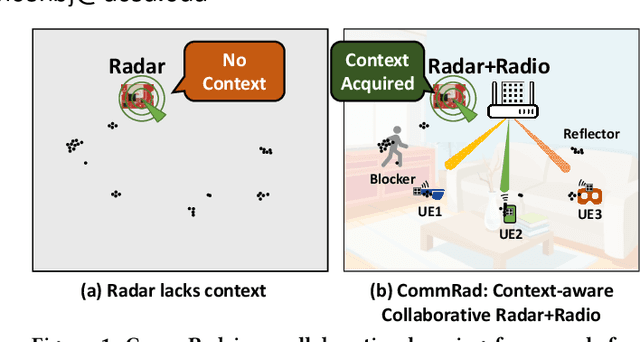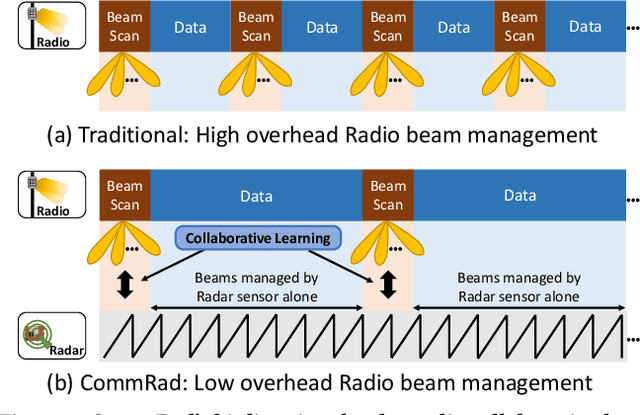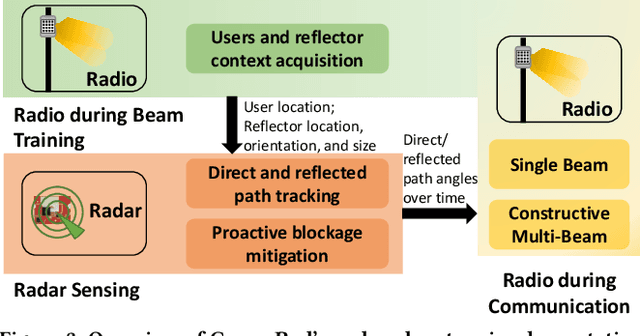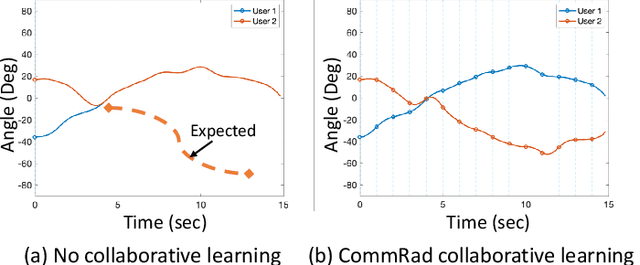Suriyaa MM
CommRad: Context-Aware Sensing-Driven Millimeter-Wave Networks
Jul 11, 2024



Abstract:Millimeter-wave (mmWave) technology is pivotal for next-generation wireless networks, enabling high-data-rate and low-latency applications such as autonomous vehicles and XR streaming. However, maintaining directional mmWave links in dynamic mobile environments is challenging due to mobility-induced disruptions and blockage. While effective, the current 5G NR beam training methods incur significant overhead and scalability issues in multi-user scenarios. To address this, we introduce CommRad, a sensing-driven solution incorporating a radar sensor at the base station to track mobile users and maintain directional beams even under blockages. While radar provides high-resolution object tracking, it suffers from a fundamental challenge of lack of context, i.e., it cannot discern which objects in the environment represent active users, reflectors, or blockers. To obtain this contextual awareness, CommRad unites wireless sensing capabilities of bi-static radio communication with the mono-static radar sensor, allowing radios to provide initial context to radar sensors. Subsequently, the radar aids in user tracking and sustains mobile links even in obstructed scenarios, resulting in robust and high-throughput directional connections for all mobile users at all times. We evaluate this collaborative radar-radio framework using a 28 GHz mmWave testbed integrated with a radar sensor in various indoor and outdoor scenarios, demonstrating a 2.5x improvement in median throughput compared to a non-collaborative baseline.
 Add to Chrome
Add to Chrome Add to Firefox
Add to Firefox Add to Edge
Add to Edge